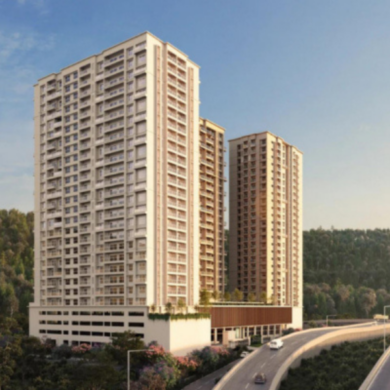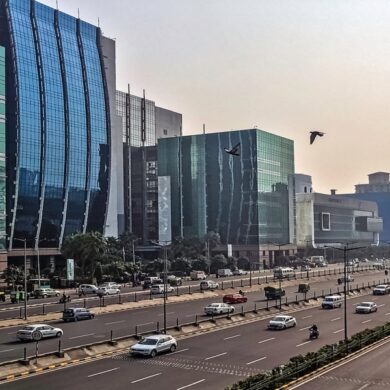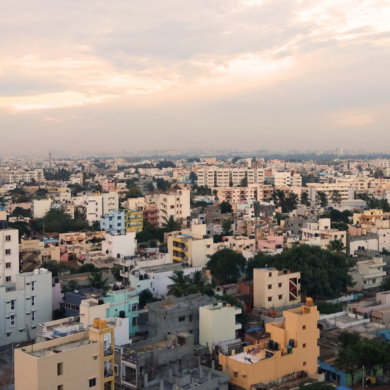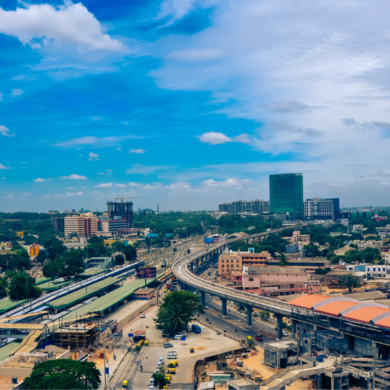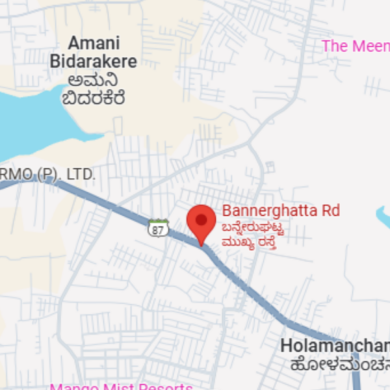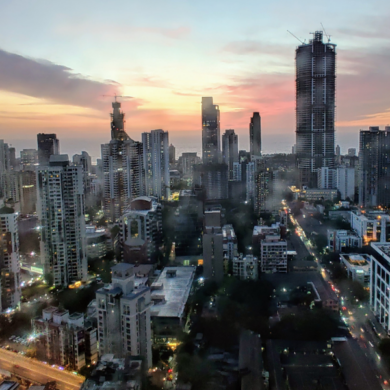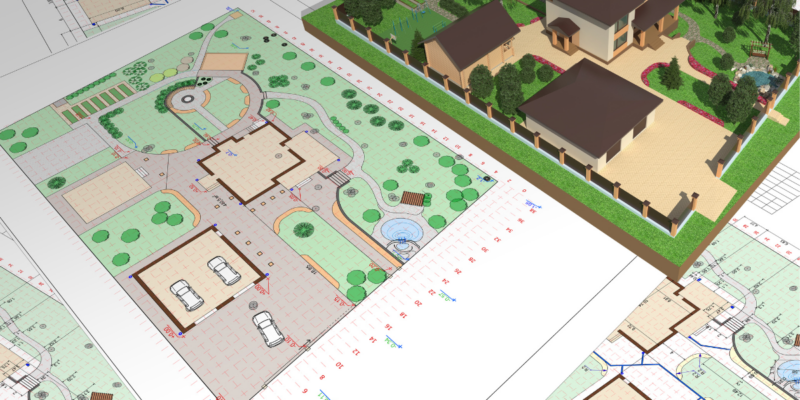
UDS or Undivided Share of Land in the context of real estate refers to a portion of a property that is collectively owned by multiple individuals or entities, without being physically divided into separate plots.
In this article, we will delve into the intricacies of the Undivided Share of Land, exploring its definition, applications, and the advantages it offers in the realm of real estate. Whether you are a seasoned investor seeking new opportunities or a curious individual looking to expand your knowledge, this guide will serve as a comprehensive introduction to the concept, equipping you with the necessary insights to make informed decisions.
Undivided Share of Land provides a means for individuals to own a fractional share of the overall property, while simultaneously sharing the benefits & responsibilities associated with it. UDS introduces a unique dynamic that fosters cooperation, collaboration, and the efficient utilisation of land resources.
Table of Contents
What is Undivided Share or UDS?
UDS or Undivided Share of Land is a term commonly used to describe the ownership share of common areas and land in multi-unit developments such as apartment complexes or housing societies. When an apartment or a home is part of a larger development, UDS represents the proportionate share of the total land and common areas assigned to that unit.
It signifies the rights & entitlements of the unit owner concerning the undivided share of the land on which the entire development is built. UDS is typically expressed as a percentage or a fraction, indicating the extent of the unit owner’s ownership rights over the shared areas. These areas may include corridors, staircases, lobbies, gardens, parking spaces, and other amenities shared by all the residents.
Significance of UDS
-
Ownership Rights:
Undivided Share of Land represents the proportionate share of land that an individual owner has, in a jointly owned property.
-
Legal Entity:
UDS helps establish the legal entity of a multi-unit development. It helps define the rights & responsibilities of individual owners within the framework of a large property.
-
Common Amenities:
It plays a crucial role in determining the allocation of common amenities and facilities among the property owners.
-
Maintenance & Expenses:
Undivided Share of Land also plays a role in determining the costs & upkeep associated with common areas.
-
Property Value:
It can impact the market value of individual units within a multi-unit development.
-
Legal & Financial Matters:
Undivided Share of Land is a vital consideration in legal and financial matters related to the property.
-
Development & Expansion:
It also influences the potential for property development or expansion.
Undivided Share or UDS in Apartments and Flats
-
Ownership Rights:
When you purchase an apartment or flat in a multi-storey building or housing complex, you acquire ownership rights not just to your individual unit but also to a proportionate share of the land on which the entire building is constructed.
-
Common Areas & Facilities:
The share determines your entitlement to the common areas and facilities within the apartment complex.
-
Maintenance & Expenses:
The UDS % has an impact on the quantum of costs associated with the upkeep of shared areas & facilities.
-
Legal & Administrative Matters:
Since the ownership of common areas is shared between multiple individuals / families, UDS is crucial for legal and administrative matters related to apartments or flats.
-
Development & Alterations:
Undivided Share of Land also defines the scope of changes to common areas within the apartment complex.
-
Resale Value:
The proportion can impact the resale value of apartments or flats. A higher share increases the value of a property, as it implies a larger ownership stake in the land & shared areas.
-
Association Management:
UDS plays a role in the management of the apartment complex through the owners’ association or society.
How to Calculate Undivided Share or UDS of Land?
UDS is typically calculated in the context of multi-unit buildings or housing societies where there are shared spaces. To calculate, you would need the following information:
- Total land area of the property
- Super built-up area of the specific unit or apartment for which you want to calculate UDS. This includes the carpet area (usable area within the walls) plus the proportionate share of shared areas like corridors, staircases, elevators, etc.
- Super built-up area of all apartments
Once you have this information, you can use the following formula:
UDS = (Super built-up area of your unit / Super built-up area of all units) x Total land area
For example, if the total land area is 10 acres, the SBU of your unit is 1,500 sq ft, and the SBU of all units is 15,000 sq ft, your UDS would be:
UDS = (1,500 / 15,000) x 10 acres = 1 acre
Read More: Understanding Carpet Area, Built-up Area, and Super Built-up Area
Undivided Share (UDS) in Real Estate Transactions
Undivided Share of Land is a term used in real estate transactions to represent the ownership interest or rights an individual or entity holds, in a collectively owned property or land. It is commonly used in situations where a property is divided into multiple units or portions. Each unit has an associated UDS, expressed as a percentage or fraction, which represents the owner’s share in the shared areas & facilities of the property.
It affects aspects such as maintenance charges, voting rights, and allocation of expenses. It is important to review the details carefully during a transaction, as it impacts ownership rights and shared facility costs. Specific regulations may vary, so it is advisable to consult with a real estate professional or legal expert familiar with local practices.
UDS or Undivided Share As Per RERA Guidelines
The Real Estate Regulatory Authority (RERA) is a regulatory body established in India to safeguard the interests of real estate buyers and promote transparency in the real estate sector. While RERA guidelines may vary by state, the concept is not specifically mentioned in the central RERA Act or its guidelines.
However, it is important to note that some state-specific RERA regulations may address the issue of UDS, or similar concepts related to the ownership of shared areas in real estate projects. For example, in states like Maharashtra and Karnataka that have implemented their own RERA rules, there are provisions for disclosing common areas and the proportionate share of each unit owner in those areas.
Selling Undivided Share of Property
This concept is commonly used in countries like India, where it is a frequent practice in property transactions, especially in multi-unit buildings or housing societies. In such cases, instead of selling individual units or apartments, the developer or owner sells a specific percentage or fraction of the overall property, often referred to as the UDS. Here are some key points to consider when selling the same:
-
Ownership Rights:
Selling Undivided Share of Land means transferring a percentage of the overall property’s ownership rights to the buyer. The buyer becomes a co-owner of the property along with other UDS holders.
-
Common Areas & Amenities:
Holders usually have shared ownership of shared areas, facilities, and amenities within the property, such as parking areas, gardens, clubhouses, or swimming pools.
-
Legal Documentation:
Like any real estate transaction, selling UDS requires proper legal documentation. This includes a sale agreement, transfer of ownership, and registration of the share in the buyer’s name.
-
Responsibilities & Liabilities:
UDS holders typically share responsibilities for maintaining and managing the common areas & facilities.
-
Resale & Transfer:
The shares can be resold or transferred to other buyers. The process involves obtaining a No Objection Certificate (NOC) from the housing society or association, along with necessary documentation & clearances.
Final Thoughts
In conclusion, UDS (Undivided Share) holds great importance in the world of real estate. It serves as a crucial factor in property ownership, particularly in multi-unit or multi-storey buildings. By understanding it, buyers & investors can make informed decisions and ensure their rights & interests are protected.
However, it is essential to conduct due diligence and seek legal advice when dealing with UDS in real estate transactions. Understanding the bylaws, regulations, and legal implications related to it is crucial to avoid any disputes or misunderstandings in the future. Consulting professionals & experts in real estate law can provide invaluable guidance and ensure a smooth process.
UDS is a vital aspect of real estate ownership that fosters fairness, transparency, and community living. It empowers owners with a share in the shared areas, grants a voice in decision-making, and facilitates a sense of collective responsibility. By embracing this concept, buyers & investors can make informed choices and contribute to a harmonious living environment in multi-unit properties.
FAQ’s
1. What is Undivided share of land?
Undivided Share of Land refers to a portion of a property that is collectively owned by multiple individuals or entities, without being physically divided into separate plots.
2. How is UDS area calculated?
UDS = (Super built-up area of your unit / SBU of all units) x Total land area For example, if the total land area is 50,000 sq ft, the super built-up area of your unit is 1,500 sq ft, and the SBU of all units is 30,000 sq ft, the percentage would be: UDS = (1,500 / 30,000) x 50,000 = 2500 sq ft
3. What is meant by UDS in apartments?
When you purchase an apartment or flat in a multi-storey building or housing complex, you acquire ownership rights to your individual unit AND a proportionate share of the land on which the entire building is constructed.
4. What is the use of UDS in flats?
Undivided Share of Land in flats refers to the portion of land allocated to each flat owner in a multi-storey building. It determines ownership & shared maintenance expenses, and is crucial in property transactions.
5. What is the UDS area of land?
In the context of land, UDS stands for ‘Undivided Share’ – which refers to the ownership interest or proportionate share of a property or land that is not specifically divided or physically demarcated. It is commonly used in situations where a property is jointly owned by multiple individuals or entities.
6. What is the role of UDS?
This concept provides a means for individuals to own a fractional share of the overall property, while simultaneously sharing the responsibilities and benefits associated with it.
7. What is the benefit of UDS?
It is a vital aspect of real estate ownership that fosters fairness, transparency, and community living. It empowers owners with a share in the shared areas, grants a voice in decision-making, and facilitates a sense of collective responsibility.
8. What is a good UDS percentage?
While 5-10% UDS is good for apartments, a figure of 20-35% is considered a good UDS percentage for low-rise structures such as villas, row houses, and BIF (builder independent floors). However, the determination of a ‘good’ Undivided Share percentage depends on numerous factors and can vary basis specific circumstances. The ideal number will depend on the individual's goals, preferences, and the specific context of the property or land.
9. Can Undivided Share of Property be Sold?
Undivided Share of Land can be resold or transferred to other buyers. The process involves obtaining a No Objection Certificate (NOC) from the housing society or association, along with necessary documentation & clearances.
10. How do you calculate UDS as per RERA?
To calculate Undivided Share (UDS) as per RERA (Real Estate Regulatory Authority), follow these general steps: A - Determine the total saleable area of the property. B - Exclude specific areas from the calculation, such as common spaces & parking areas. C - Calculate the proportionate share based on the ratio of the unit's carpet area to the total carpet area of all units. D - Ensure accurate documentation & disclosure of UDS calculations in project-related paperwork
